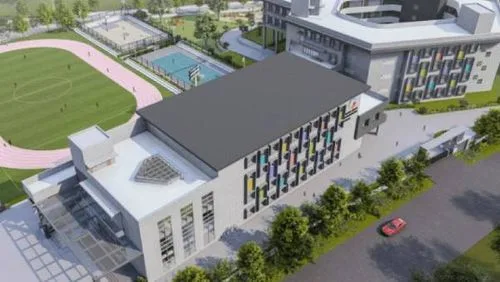Download our FREE Academic Calendar now! 📚 Start your child’s journey to success.
Some of the best schools in Ahmedabad follow the CBSE board for their high school curriculum, while the other schools follow the ICSE. In this post, let us discuss the main differences between the two syllabuses and understand their advantages and disadvantages in order to make a decision that is right for you.
“CBSE stands for Central Board Of Secondary Education while the ICSE stands for Indian Certificate Of Secondary Education. Both are top education curricula applicable to secondary students who study in Indian Schools.”
Here Are the Differences Between the CBSE and ICSE Board
1. Curriculum
CBSE: The CBSE Curriculum provides in-depth knowledge theoretically and aims to help children master their concepts in subjects like Science, Maths, Social Studies and Languages.
CBSE follows the NCERT (The National Council of Educational Research and Training) curriculum which also designs entrance examinations like CEE, NTSE, etc.
NCERT is a publishing body and hence students who follow the CBSE curriculum through the NCERT textbooks will be at an advantage when they appear for entrance examinations in classes 10 and 12 for higher studies and for prospective scholarships as they will have an understanding of the NCERT designed curriculum.
The CBSE is also known to be relatively easier than the ICSE. CBSE is especially great for children who wish to pursue engineering and medicine.
ICSE: The ICSE curriculum is known to provide practical knowledge as compared to the in-depth theoretical teachings of the traditional CBSE.
The Council for the Indian School Certificate Examination (CISCE) is responsible for creating the ICSE syllabus. ICSE also focuses more on languages, arts and science subjects.
ICSE is a good option for students who wish to pursue management studies, literature and other art oriented courses.
2. The Kind of Marking Used for Exams
CBSE: The CBSE’s exams are marked with an alphabetical grading system such as A1, A2, B1, B2, etc. Grading systems in the CBSE has an advantage as it reduces the unhealthy competition among students and brings down the pressure and increases flexibility for students.
ICSE: The ICSE marking system is based on grades for external examination ranging from 1 to 9. A grade 1 indicates “very good” and grades above 8 are considered ‘fail’. In internals, the grading system is alphabetical, which ranges from A to E where A is the top most grade and E is the lowest or fail.
3. Ease of Adaptation and Transferability
CBSE: The CBSE is ideal for those whose parents have transferable jobs where they are required to change schools often from one city to another and since CBSE is a well-renowned curriculum both in Indian and International schools, it can be advantageous during this change.
ICSE: ICSE can be beneficial for those who are moving from the same syllabus to another school offering ICSE syllabus. And ICSE schools only accept students from the same syllabus most of the time.
4. Medium of Instruction
CBSE is known to be unbiased when it comes to the medium of instruction as they have schools that follow English as well as Hindi as their main medium too.
This can be a great advantage to students who study in smaller cities but still wish to gain a good education from a standard Indian board.
ICSE only follows English as a medium of instruction and doesn’t recommend Hindi or any other language as a medium of instruction.
These were some of the main differences between the CBSE and ICSE boards, however when one is looking for prospective schools, it is advisable to look into more details than just the board of education they offer.
What Are the Other Things to Consider While Looking for the Best CBSE Schools in Ahmedabad?
1. The Learning and Teaching Methods
This is a crucial factor as most high schools in Ahmedabad follow their own pedagogies in order to match their school’s vision and mission. Therefore, it is imperative to understand their teaching methods and the kind of results that the students are delivering every year.
Some of the best CBSE schools in Ahmedabad have a robust curriculum that doesn’t just follow theoretical teachings but also practical methods to help their children gain a thorough understanding of their concepts.
2. High School Environment
Some of the best CBSE schools in Ahmedabad have a very collaborative approach of teaching inside their classrooms. The teachers understand the need to inculcate skills like critical thinking and adaptability in children and they ensure to create an environment that is highly engaging and collaborative.
3. A Pedagogy That Will Provide Holistic Learning
This is made possible by the best high schools as they have integrated modern learning methods into their curriculum that doesn’t just comprise core academics but also ECAs and CCAs.
These activities aim to instil the right kind of skills and confidence that will enable children to handle complex situations with ease and assertiveness.
Also Read: 10 School Interview Questions for Parents
Conclusion
These were some points to ponder over and some of the main differences between the CBSE and the ICSE syllabus in India.
Irrespective of the curriculum one chooses, the end result should ensure that your child is ready to face the challenges of the coming century with a positive attitude.



































